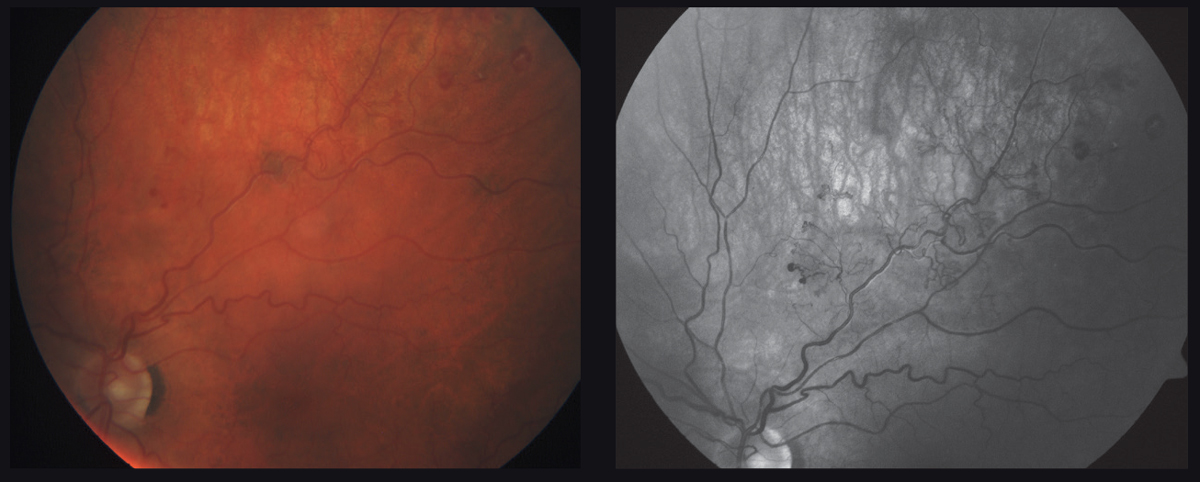 |
Patients with worse stereopsis from BRVO may suffer from decreased quality of life. Photo: Carrie Ho, OD, Angella Gentry, OD, and Richard Zimbalist, OD. Click image to enlarge. |
Vision-related quality of life is influenced by more factors than acuity alone, and stereopsis in particular is an important but underrepresented element, according to a recently published study that assessed this relationship in patients with branch retinal vein occlusion (BRVO). The prospective, multicenter study included 37 patients with BRVO receiving intravitreal ranibizumab and 24 age-matched controls.
The researchers reported that intravitreal ranibizumab significantly reduced central foveal thickness and improved stereopsis scores from two to 12 months. They also noted that, compared with controls, BRVO patients had significantly worse stereopsis before and after receiving injections. Treatment led to significantly improved visual function scores (NEI visual function questionnaire). The researchers noted that baseline TNO score was associated with vision-related quality of life in BRVO patients.
They added that clinicians should pay attention to stereopsis as well as visual acuity in BRVO patients, due to quality-of-life considerations. “Stereopsis induced by retinal diseases is improved with adequate therapy,” the researchers wrote in their paper, citing previous studies that demonstrated significant stereopsis improvements after vitrectomy for epiretinal membrane and macular hole. “Intravitreal ranibizumab treatment has been proven to be effective for the BCVA, stereopsis and contrast sensitivity in patients with BRVO for six months.” However, they do note that another study “reported that intravitreal ranibizumab did not improve metamorphopsia.”
Morikawa S, Okamoto F, Murakami T, et al. Relationship between stereopsis and vision-related quality of life in patients with branch retinal vein occlusion. BMJ Open Ophthalmol. March 3, 2022. [Epub ahead of print]. |

